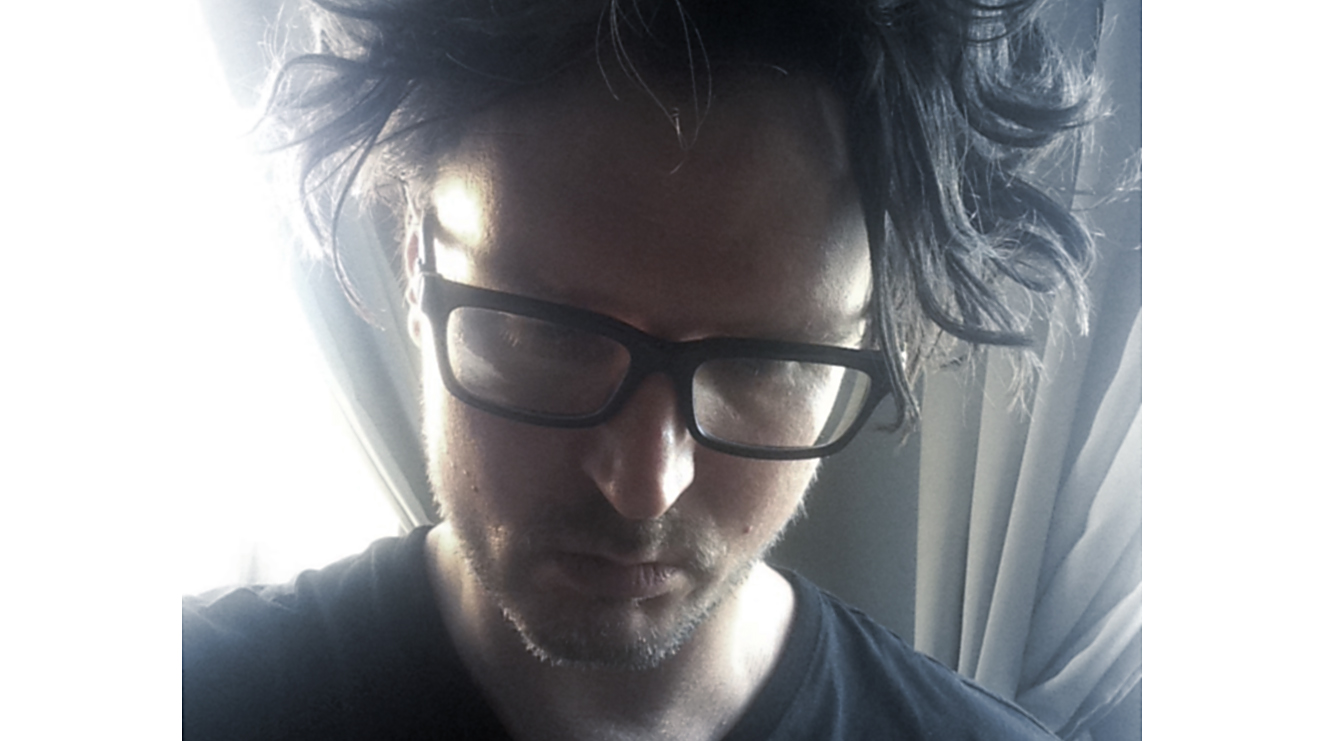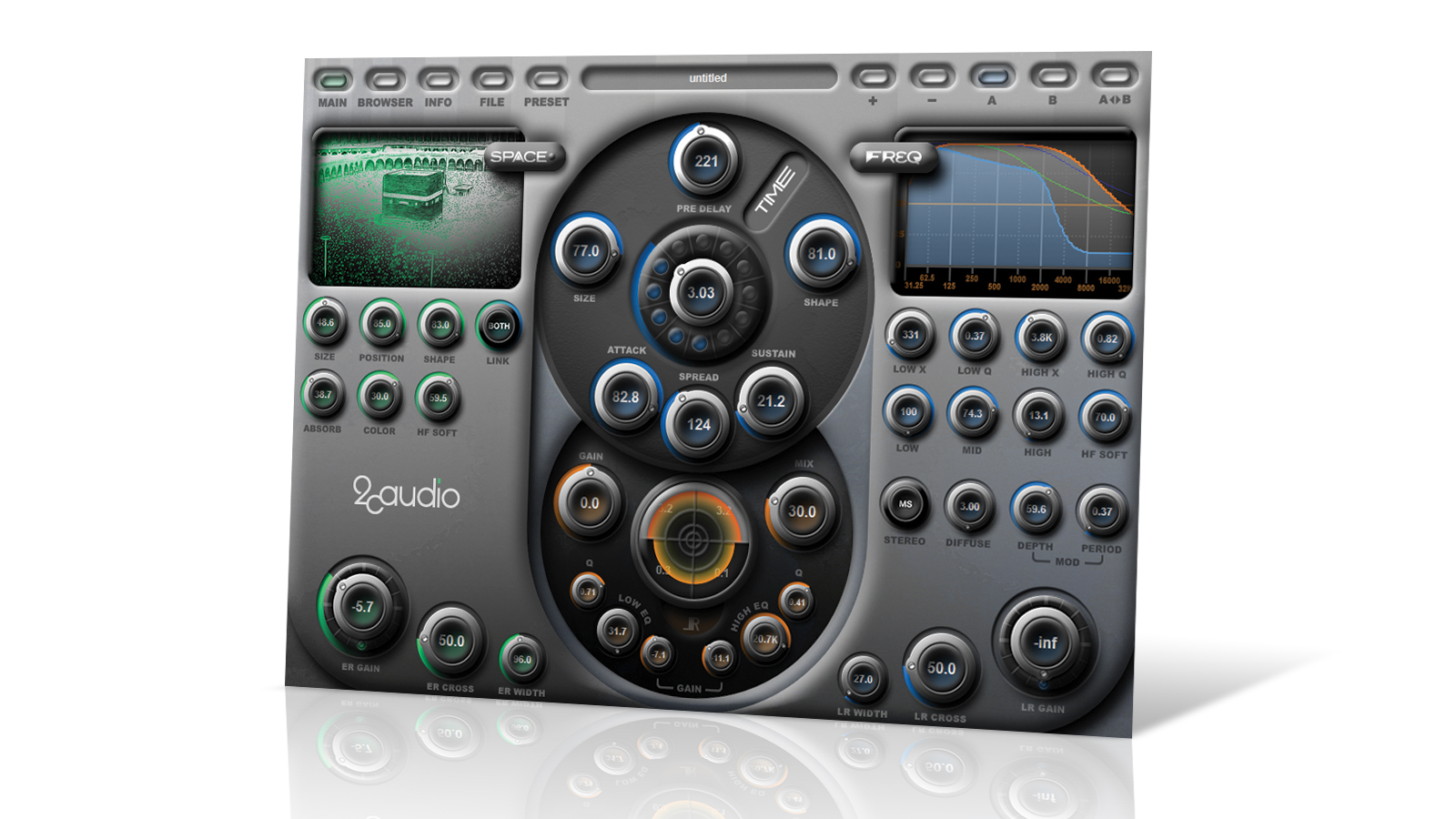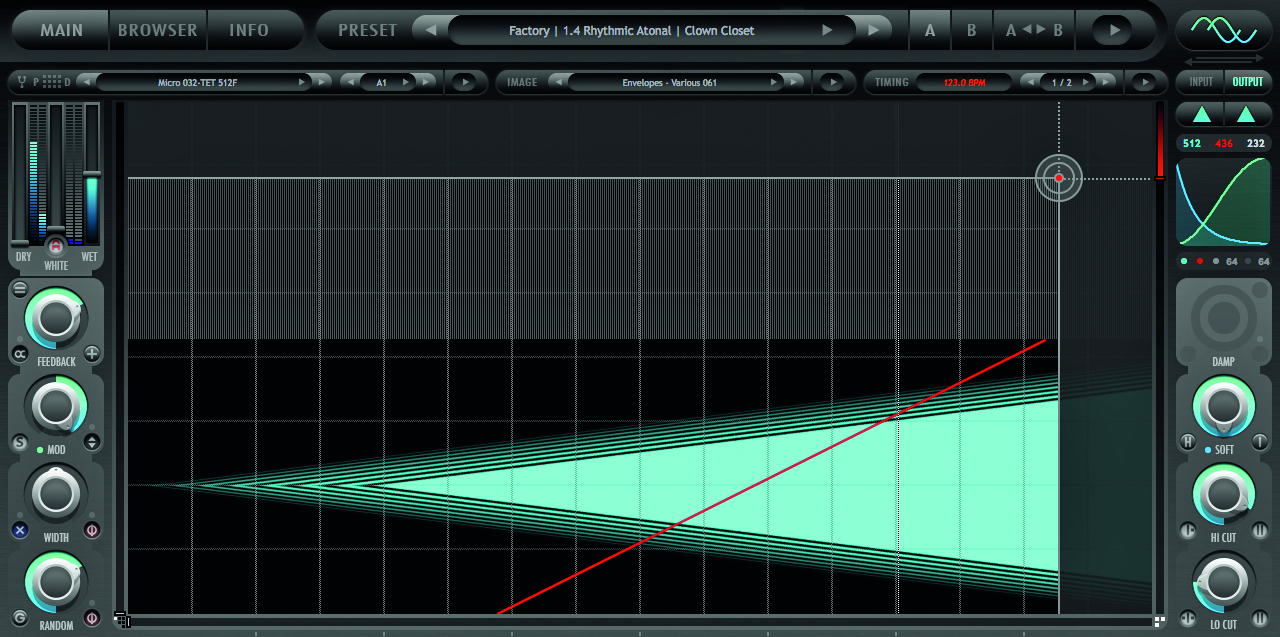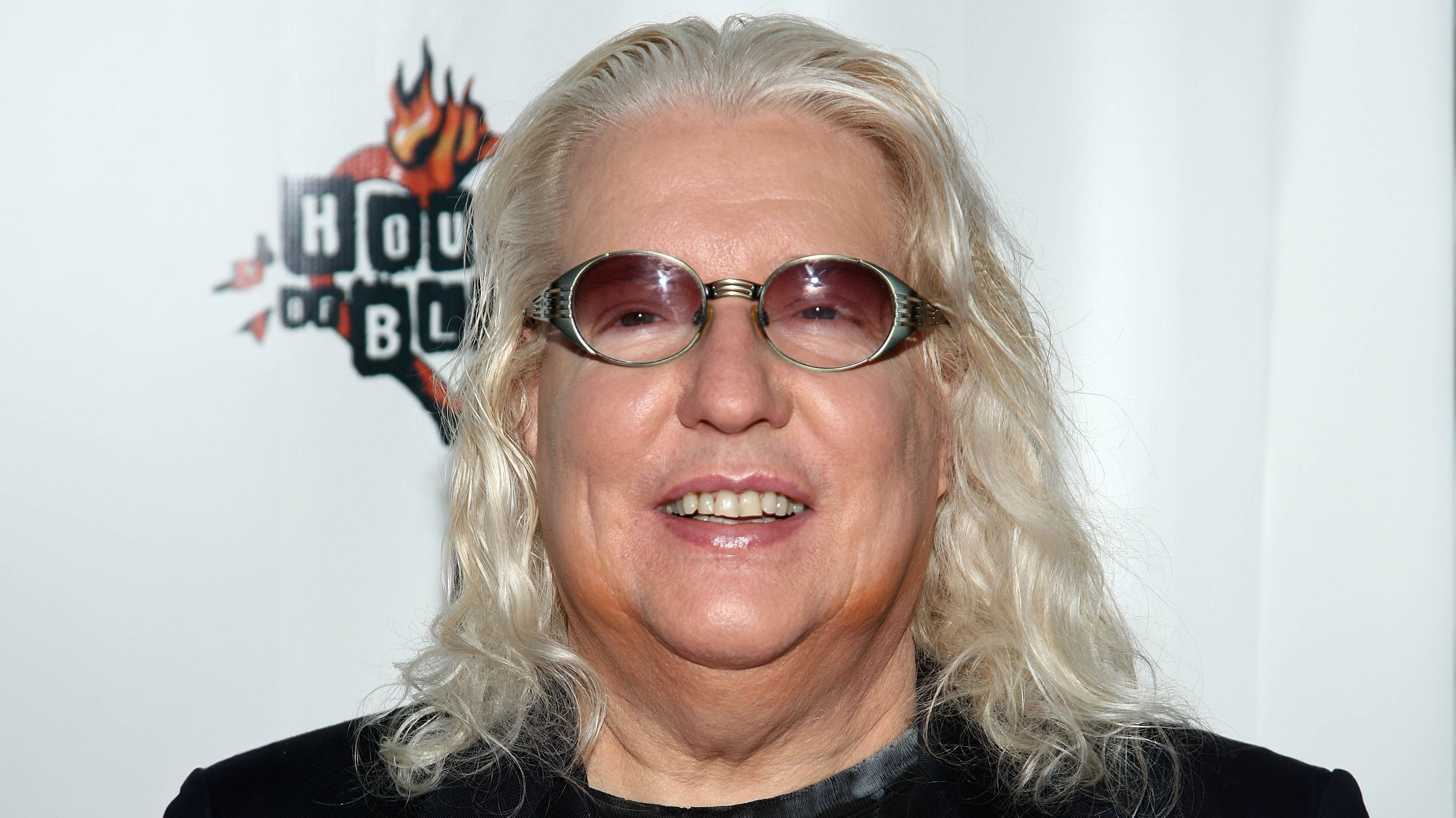Meet the Programmers: 2CAudio
We talk to Andrew Souter about the future of music making

While some companies focus on developing perfect replicas of classic processors, 2CAudio has always had a more forward-thinking attitude to music software, with products such as spatial processor Aether winning plaudits from the industry's talking heads. Shortly after the release of Kaleidoscope, 2C's landmark sound-design instrument, we caught up with Andrew Souter to determine his philosophy when it comes to software creation, and to quiz him on what's next from the company.
Tell us a bit about your background in software development and in music! How did 2CAudio get started?
AS: "I have no formal education in music composition, performance, sound-design, DSP, computer science, advanced mathematics, or other related discipline. I'm, for the most part, self-taught in all of these areas, and I'm a big believer in self-directed learning. I started my journey into music via an interest in ambient music and film scoring in my mid teenage years - around 14. I couldn't afford a synthesizer at the time, so I resolved to teach myself piano to begin with. Piano composition and performance are true passions of mine - first loves, if you will. They are my original art. Ambient music, electronic music, dance music, scoring, sound-design, and eventually DSP and software development, all followed directly from my desire as a composer to improve my craft.
I'm proud to say I love mathematics and geeking-out deep in DSP research in pursuit of developing never-before-heard, futuristic sounds
"I'm inspired by many things. Yes, I thoroughly enjoy highly technical things, andI'm proud to say I love mathematics and geeking-out deep in DSP research in pursuit of developing never-before-heard, futuristic sounds.However, I just asthoroughly, if not more thoroughly, enjoy making music. I find it is necessary to remain balanced, and sometimes, when we become out of balance, it can be good to go back to our first passions and do something purely human. I'm ultimately interested in telling effective emotional stories and exploring what it means to be human. This is what matters most to people in the long run. Technologies come and go, but the human narrative remains. I go very deep into the trenches of technology very often, and do so with vigor and passion, but the motivation for this is to discover new ways to tell powerful stories. It's very important to remember this. Technology is designed to serve humanity, not the other way around. Thus, by practicing purely human creative acts once in a while, one can gain a critical perspective on the proper hierarchy of needs within musical creativity and product development.
"Musically, I've done dance music releases on Paul Oakenfold's Perfecto label, Cyber Records in Amsterdam that is now part of Armada, a few US labels, and worked with Sasha on Invol2ver and several remixes. I've worked on scores for TV commercials for brands including Discovery, History, TLC, and games with Centropolis Entertainment and Sonic Mayhem in Los Angeles. In 2014, I started my own record label and publishing company to handle my personal music. I released the first installment of a solo-piano trilogy, and an ambient album. I'm now completing the second solo-piano album. You can have a listen on my Soundcloud.Piano is a true passion of mine, and I've been focussing on it more than any other style lately, in part to balance out my highly technical work in 2CAudio.
"I have an undergraduate degree from the University Of Southern California in Los Angeles, where I attended the Lloyd Greif Center for Entrepreneurial Studies, which is currently ranked number two in the United States. I was accepted to USC for computer science on academic scholarship, but I switched majors to go through the Entrepreneur program because a) I always knew I wanted to have my own company and hire people with higher technical pedigrees than my own as necessary, and b) I wanted to have enough free time to score student films to practice my passion of film scoring. I did take a few classes on an elective basis with the Music Industry program at USC, and I did have a general education freshman class on Ethno-Musicology, which was taught by a professor who had come from Yale and taught the graduate early music and Baroque classes. I also took a student job in both the music library and the university computer store so that I could spend my time learning as much as I could about classical music theory and technology. I read everything and anything I could on music and technology, and continue to do so today! I wrote an extensive business plan for a music software company based around the idea of algorithmic composition. I was 19 at the time. I also was already beta testing for companies like MOTU, Waves, Prosoniq, Sound Toys etc.
"The math and science side of things comes naturally to me. I read Curtis Roads' 1000-page book, The Computer Music Tutorial, completely while still in high school. Several times - again and again until it actually made sense. I read the MIDI specification book during calculus class in high school. I subscribed to the Computer Music Journal, the Just Intonation Network, all the regular magazines, etc. Basically I read and absorbed everything I could on the subject beginning around 14-15 years of age.
Get the MusicRadar Newsletter
Want all the hottest music and gear news, reviews, deals, features and more, direct to your inbox? Sign up here.
One might summarize succinctly that I'm an artist with a highly scientific and analytically-oriented mind
"I got deeply involved with technical sound design as mentioned above, including becoming somewhat of an expert on developing waveforms that are used today by many industry-leading synthesizers including NI Massive, Camel Audio Alchemy, and many others. This lead to me coding eventually. I would say, however, that to this day, I'm not a 'proper' computer science person. I'm a hacker more than a proper coder. Denis Malygin, my partner in 2CAudio is the proper computer science person of our team. Today I code a couple thousand line test algorithms in C, and work out the mathematics of things we use. I know enough to be dangerous, but I could not code our products completely by myself. I know very little about things such as memory management, optimization in assembly language, systems coding, and host integration - Denis handles these areas. I'm the idea guy, the creative visionary if you will, and additionally, I work out the research and development and am very deep into the mathematics of the things we use. You could say I specialize in the mathematics of aesthetics. I know intuitively what is necessary and interesting to achieve the type of perfection that the world's best composers, artists, producers, and sound-designers demand. I know this because I'm all of these things myself. One might summarize succinctly that I'm an artist with a highly scientific and analytically-oriented mind.
"Denis is another highly skilled individual who did really great things at a very young age. He had a previous company, Spin Audio, that he started around the age of 22, which made a couple different products including a popular reverb RoomVerb. Denis developed the very first test algorithm of what eventually became Aether 1.0, providing us with a reasonably good working basis, and together we made it truly great. The 0.9 algorithm was very heavily Denis' design. From the point of Aether 0.9 in December of 2008 to where we are now on the reverb side of things, I would say my obsession and perfectionism took over and started to lead development in terms of research and development, algorithm design and feature additions. A lot of Denis' time is tied up with systems coding. We've added a third developer to the team starting this year however, and we hope to have more research time for all of us going forward.
"Denis and I were born the same year in the middle of the cold war: Denis in Russia, and me in the USA. We both took a leap of faith and learned to work together and respect one another to combine the best of our abilities and form a synergy that combined had the ability to create entirely next generation products that neither one of us could accomplish on our own. We hope deeply 2CAudio might be an example of the good that can come from learning to go outside your comfort zone and having enough empathy and compassion to see the best in people from all over the world - even if and when it goes against popular local opinion. If anything can help to unify the world, I think it will be art, music, science, technology, and perhaps space exploration."
The digital world offers technically unlimited possibilities to create new and unheard sounds and instruments - but we're still seeing more emulations than innovations. Is that because of customers, developers, or a bit of both?
AS: "For better or for worse, to a certain extent, there's sometimes a herd mentality among social groups, even when the groups are comprised of creatives who pride themselves on being rebellious individuals such as artists and musicians. There is a great book titled Extraordinary Popular Delusions and the Madness of Crowds written in 1841, which investigates the psychology behind such social behaviour. It's generally prescribed as required reading for people entering industries such as finance, in an effort to provide some form of rational immunity to such things; however, a simple cursory glance at Wall Street will tell you knowledge of the existence of such phenomena is unfortunately not a successful immunization against possible infection. Memes are very powerful and resilient entities.
There is an entire new generation that has no firsthand experience whatsoever with the glory days of analog synthesis or the Lexicon 480-L. They have not even heard such things in person, yet still vehemently extol their merits.
"In our industry, it seems sometimes people associate the success and accomplishments of past artists with the particular process that was used at the time. Moog synthesizers or analog synthesis in general, is often romanticized and idealized. Lexicon reverbs such as the 480-L are often viewed with the same affinity. Ironically, these trends even transcend generations, and there is an entire new generation that has no firsthand experience whatsoever with the glory days of analog synthesis or the Lexicon 480-L. They have not even heard such things in person, yet still vehemently extol their merits.

"I find this a little misplaced, personally. In my opinion, it wasn't the tools used at the time that made these artists great, but rather it was their deeply creative use of them, and their willingness to take risks creatively. Perhaps that might even be giving slightly too much credit, as it may have been more of a necessity than a willingness to take risks. The necessity came from the simple fact that there was no formula to follow for commercial success using these new tools at the time as they simply did not exist beforehand - they were new to everyone. I believe artists with the same creative spirit would make masterpieces of equal importance using the tools of today if they had the same mentality. A secondary theme is perhaps the idea that these artists also had a more limited tool set, so they actually took the time to deeply learn everything each tool could do, instead of just calling up a patch from the 500 different soft synths that we all have on our laptops today. They likely had a deeper understanding of the tools they were using and therefore gained better mastery of the ones they did have.
"To be clear, I have deep respect for all the companies who have come before us, and I do indeed believe their work was industry-leading and deserving of the praise it was awarded at the time of its inception. However, it is my sincere belief that the magic accomplished by such companies in the 70s and 80s was not tied specifically to the technologies that were used the time, but rather to the simple fact that these were the early pioneers and the first explorers of the field in general. There was nothing preexisting to emulate at the time, so as a simple matter of necessity, they performed the primary research themselves and wrote the language that developers of today still speak. The point is, these were indeed the people who performed the independent creative thought and primary scientific research into these topics. The only thing they emulated was nature itself, which, in my humble opinion, is the ultimate teacher. Engaging in such behavior leads to deep understanding of the problems that they struggled with, and this rightfully made them true leaders of the industry.
I attempt to do what the early pioneers were forced to do out of necessity: I attempt to think independently and I attempt to learn how to learn
"Sadly, this has become a bit of a lost art form. Many people have given up trying to innovate or develop truly original ideas in favor of copying the great minds of yesterday. I'm not 100% sure if this trend is lead by customer demand, or developer apathy, or the hope for a quick buck, or something else, but I have made a very conscious effort to attempt to lead our company in a different direction. I absolutely attempt to learn everything and anything I can from everything that came before us, but most importantly,I attempt to do what the early pioneers were forced to do out of necessity: I attempt to think independently and I attempt to learn how to learn.
"I attempt to understand the questions these pioneers struggled with, not the answers they came up with using whatever the state of the art technology was at the time. The technologies available in the 70s were in the Stone Age compared to what we have today. Why should they be emulated today, expect perhaps in attempt to make 'period art'?
"If anything should be emulated, it's the emphasis on independent thought and development that was commonplace among the earlier pioneers, as well as their tendency to be more connected to 'the source', that is to say, nature and pure mathematics. They tended to probe deep into nature with a sense of wonder and awe that is sometimes lost today. Today everyone seems to assume we understand things perfectly, and everyone reads the same textbooks and information that has been abstracted several levels away from the source. Each abstraction level makes assumptions which may not be completely perfect. Even when these abstractions do represent the perfect answer, being handed the answer has a much different effect on a person than actually doing to the work to struggle with the question to obtain it oneself. Without performing primary research oneself and probing deep into the source, nature and pure mathematics, it is not possible to obtain the same level of understanding. This makes true innovation difficult in my opinion."
There must be more room for innovation when designing an instrument or 'tool', than when creating a reverb/spatial processor - did you feel more freedom in creating Kaleidoscope than you'd felt making some of your other plugins? How did that affect the process?
AS: "Well, I would argue that B2 is a very good example or just how creative you can be with spatial processing, and it is indeed a quite creative product. Even Aether is quite creative in its design and especially many of its presets. As I'm an artist myself, creativity is simply in our DNA at 2CAudio and Galbanum, and I simply can't suppress it even when I try. But yes, I suppose I would have to concede that the floodgates are thrown wide open when working on something like Kaleidoscope that is expressly and explicitly and creative tool.

"One way this can affect the development process is that there is more of a danger for feature creep when developing something that is not well defined and highly experimental in its early phases. In the early stages, we have a general concept that we think will be cool, or maybe more accurately something more like a religious conviction that we know the concept is cool in a way somewhat akin to the way Morpheus knows Neo is 'The One'.
When you're on the right track of discovery, you begin to understand the convergent universality of the nature of reality. You start to realize how everything is connected
"The devil is in the details, as they say however, and we don't know just how realizable the concept is until we get our hands dirty in the implementation details. As this happens, we discover all variety of obstacles, and this requires original primary research to overcome. This leads into a very deep rabbit hole of intense DSP research, and this process leads to all sorts of novel discoveries. These discoveries generate new ideas, not just for the product, but also for existing products and future non-existing products. I've discovered that a somewhat ironic truth of the universe is that often, when you're on the right track of discovery, you begin to understand the convergent universality of the nature of reality. You start to realize how everything is connected. So you think you're working on Kaleidoscope, and before you know it, you're taking a tangent to develop B2, which is actually in truth how things happened over the course of the development of Kaleidoscope."
Did you always want to make a 'visual' input to control Kaleidoscope, or did that come out naturally in development?
AS: "Absolutely! This is a critical component of the design of the product. This was in fact the central idea. I have been very involved in the whole 'visual control of sound' paradigm for at least a one and half decades now. My very first commercial product was Galbanum Architecture Volume One, which was a content library developed for U&I Software's MetaSynth, one of the early pioneers in this field. This content that I created was reappropriated to use with Kaleidoscope as a starting point, as I wanted to have more ways to fully realize the potential represented by the ideas it contained. Kaleidoscope is therefore somewhat of a full circle for me, and a return to a topic that is very dear to my heart. I believe very deeply in the power of this paradigm and I believe there is much more that can be done with it. Kaleidoscope represents many novel and independent developments in this field and advances the art many steps compared to anything coming before it. It is just the first step however, and we have much more planned for it. It is my goal to make it a historically important product for sound-design and electronic music."
When we last spoke to you, you mentioned your dream of having a Minority Report-style music-making setup, "in the middle of a domed, holographic computational visualisation surface." So, er… how's that coming along?
AS: "Actually, it's progressing quite impressively. We see already 4K displays have become reasonably common; Apple and Dell have released 5K displays; and Samsung, LG, and others have already demonstrated 8K displays at trade shows such as CES. The next Display Port specification supports 8K as well. We have even seen curved displays already from a few companies. All of these things indicate these trends of visual computing will continue to evolve and in another decade or two our reality will look very much like the science fiction of today.
When our development in areas of technological accomplishment supersedes our development of appreciation for subtle beauty and our evolution of a better sense of empathy and compassion for others, we begin to walk down a very dangerous path. This is something I try to be aware of and speak about when I can.
"Science follows art. Artists, poets, and visionaries imagine new futures. Scientists make them a reality. Creativity is therefore almost a sacred and magical thing. I believe deeply in my heart that anything and everything that can be imagined, can be - no, strike that - will be, manifested in reality. There is very little difference between the dream world and the real physical word. The only difference is some temporal delay, which eventually one day we may even come to understand as some form of illusion. We should therefore, as a species, be very careful with our creative energy and how we choose to direct it. If we spend our time developing nightmarish scenarios in the name of entertainment, we shouldn't be surprised when our society trends in this direction. When our development in areas of technological accomplishment supersedes our development of appreciation for subtle beauty and our evolution of a better sense of empathy and compassion for others, we begin to walk down a very dangerous path. This is something I try to be aware of and speak about when I can.
"So the question is not how close we are to having XYZ science fiction technology, such as immersive holographic displays or anything else. The question is, instead, as we now understand that such fantastical ideas and even more far-out things are not only possible but in fact inevitable , what will we do with them when they arrive? We will use them to create more divisions between haves and have-nots such as in Elysium, or develop ways to kill each other more efficiently such as in 1984 and Terminator, or induce a permanent artificial state of apathetic bliss such as in Brave New World and Strange Days? Or will we use such technology to humbly attempt to better understand what it means to be human and better define our place in the universe together as a species. These are the questions humanity faces now. Our childhood is ending, whether we like it or not, and we had better be prepared for adolescence."
What's next for 2CAudio?
AS: "We're completing another creative product at the moment which will complement Kaleidoscope nicely, as well as be its own distinct product. We're also working on more enhancements to Kaleidoscope. I'm personally completing my Architecture Volume Two content library for Kaleidoscope, have been studying tonality even more deeply than I have ever done previously and have recently created something like half a million new tunings to use with Kaleidoscope and eventually other products! We've also begun work on the 2.0 versions of our reverbs. We don't sleep much, and when we do we try to dream about new product ideas!"


Computer Music magazine is the world’s best selling publication dedicated solely to making great music with your Mac or PC computer. Each issue it brings its lucky readers the best in cutting-edge tutorials, need-to-know, expert software reviews and even all the tools you actually need to make great music today, courtesy of our legendary CM Plugin Suite.










